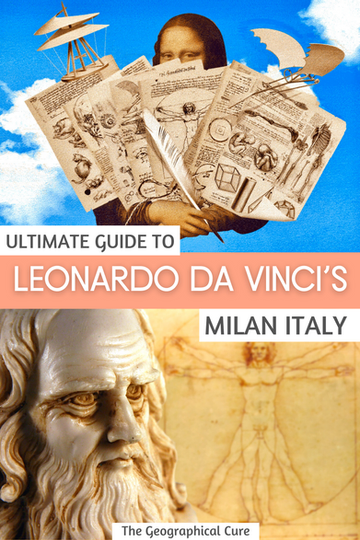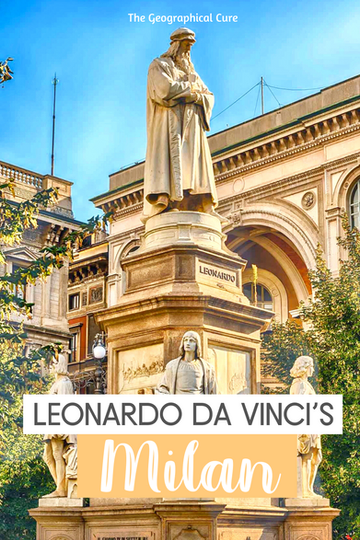“Once you have tasted the sky, you’ll forever look up.” — Leonardo da Vinci
Planning a trip to Milan and obsessed with Leonardo da Vinci? Here’s my guide to the must see Leonardo da Vinci sites and attractions in Milan Italy.
Leonardo lived in Milan for almost 20 years and is considered a beloved adopted son. In Milan, Leonardo produced some of his greatest works and enriched the city with his versatile genius.
If you’re wondering where to find the art of Leonardo in Milan, read on for the perfect Leonardo-Milan itinerary. This Leonardo guide takes you back in time to discover works created by Leonardo or places dedicated to him — from the transcendent Last Supper to the technical musings of the Codex Atlanticus.
Leonardo da Vinci’s Life in Milan
Leonardo was born out of wedlock in 1452 in the Tuscan village of Vinci, near Florence. His father was a wealthy lawyer and his mother a 16 year old peasant orphan. Leonardo received no formal or classical education.
But he had access to scholarly texts. Happily untrammeled by authority, Leonardo became a free thinker.
Leonardo was a star from the start. A prodigy from an early age, Leonardo apprenticed with early Renaissance master Andrea del Verrocchio in Florence for 10 years.
At the time, Leonardo was part of the Medici court and likely living in the Medici Palace. He was popular, with the poise of a prince and a philosopher’s ruminative mind.
Leonardo was considered the quintessential Renaissance man — a painter, polymath, scientist, astronomer, architect, anatomist, and engineer. Leonardo was also a perfectionist who hated to say “done.” Despite being spread too thin and often leaving works unfinished, Leonardo left a long-lasting legacy of visual magic, invention, and mystery.
In 1482, Leonardo moved to Milan, having pitched himself to Ludovico Sforza, the Duke of Milan, as a “great military engineer.” Leonardo wanted to expand beyond painting and pursue his scientific investigations. The duke enlisted Leonardo in various court and urban planning tasks, including the production of elaborate pageants.
Leonardo lived in Milan for 18 years, producing some of his best works including Virgin of the Rocks and The Last Supper. The hedonistic court life suited him. In Milan, Leonardo didn’t have strict deadlines for completion and became something of a peacock dandy, favoring pink and purple clothing.
Leonardo left Milan in 1499 but would return in 1506. He returned to work on the Sforza equestrian statue. It was in Milan that Leonardo adopted the habit of committing his studies to elaborately illustrated notebooks, which were later collected into codexes.
In 1515, the young and art-loving French King Francis I — desperate for some Italian art — invited Leonardo to France. At the age of 64, Leonardo became the official court painter at Fontainebleau, living a life of leisure. Leonardo died in 1519, leaving his legacy to his two lovers, Francesco Melzi and Gian Giacomo Caprotti (called “Salai”).
Here’s my complete guide to Leonardo’s life and all his paintings.
Leonardo da Vinci Trail in Milan Italy
Here’s are 10 places in Milan where you can walk in the footsteps of Leonardo and discover his genius:
1. Leonardo Monument, Outside the Galleria Vittorio Emanuele II
The Galleria Vittorio Emanuele II is the pride of Milan. Built from 1865-77 by Giuseppe Mengoni, the dreamy Galleria is the oldest covered shopping arcade in the world.
It may be the most elegant as well. The Galleria is outfitted in classic Renaissance style with marble, iron, and glass. It’s a veritable shopping paradise.
Don’t miss the brooding statue of Leonardo da Vinci in back of the Galleria. It’s in the Piazza della Scala, in front of the La Scala Opera House. Built in 1872, the da Vinci monument was designed by Pietro Magni, a 19th century Italian sculptor.
Leonardo is depicted with his signature bushy beard, wearing a full body robe and engineer’s hat. Leonardo’s effigy symbolizes a bottle of wine, with the four pupils at his feet representing glasses. The pedestal’s bas relief is a tribute to Leonardo’s virtuosity in the fields of painting, architecture, sculpture, and engineering.
Address: Piazza della Scala
2. Leonardo’s The Last Supper in Santa Maria delle Grazie
The Last Supper is one of the world’s most iconic paintings, found on the back wall of the refectory (dining hall) in the monastery of Santa Maria delle Grazie in Milan. It was commissioned by Leonardo’s patron, Ludovico Sforza, the Duke of Milan.
No painting is so familiar, save for the Mona Lisa. The billboard size painting is a Renaissance masterpiece.
It depicts the most dramatic moment in Western history — when Christ reveals that one of his apostles will betray him. In a swoosh of emotion, Leonardo captures each apostle’s unique reaction to his declaration — horror, astonishment, anger, anxiety, grief, shock, etc.
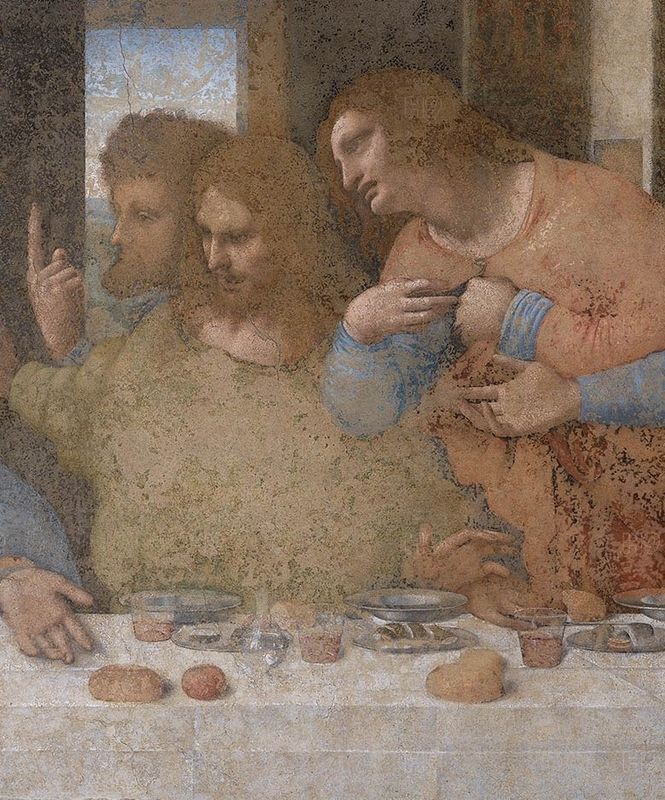
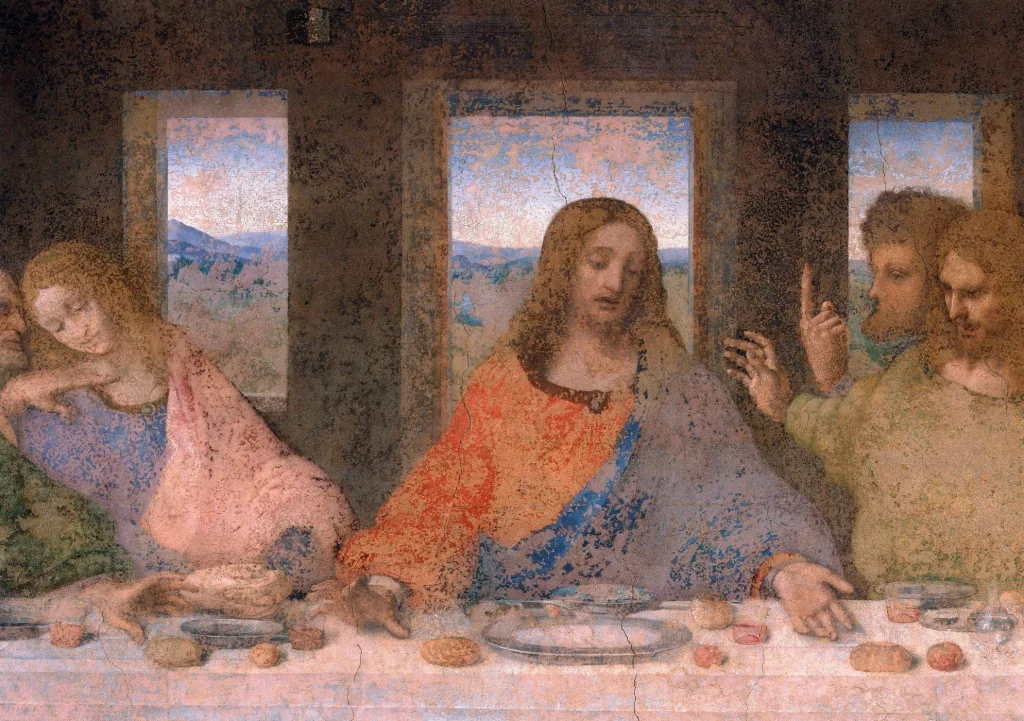
The Last Supper is also renowned for its revolutionary use of single point perspective, which gives the 2D painting a 3D perspective. Leonardo angled the walls within the picture so that the vanishing point converges on Christ, emphasizing his importance.
The scale of The Last Supper is enormous — 29 feet wide by 15 feet tall. Not only is The Last Supper famous, it’s as renowned for its fragility as its power. It has a tortured history and, sadly, it’s in terrible condition. No one has seen the painting as it was meant to be experienced in five centuries.
Leonardo’s ethereal fresco is largely a failure, a bit of a self-obliterating wreck. Finished in 1498, The Last Supper unfortunately began flaking off the wall in 1517.
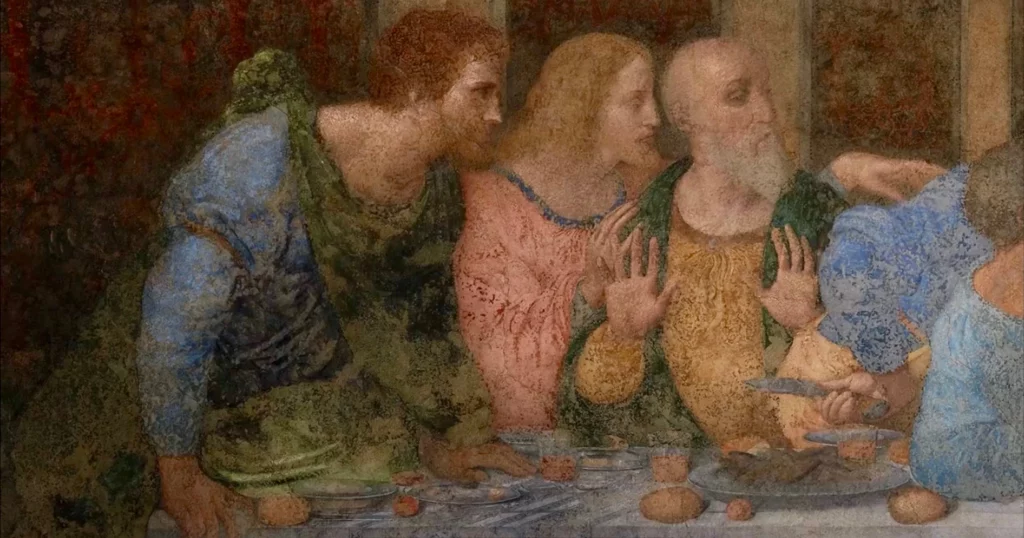
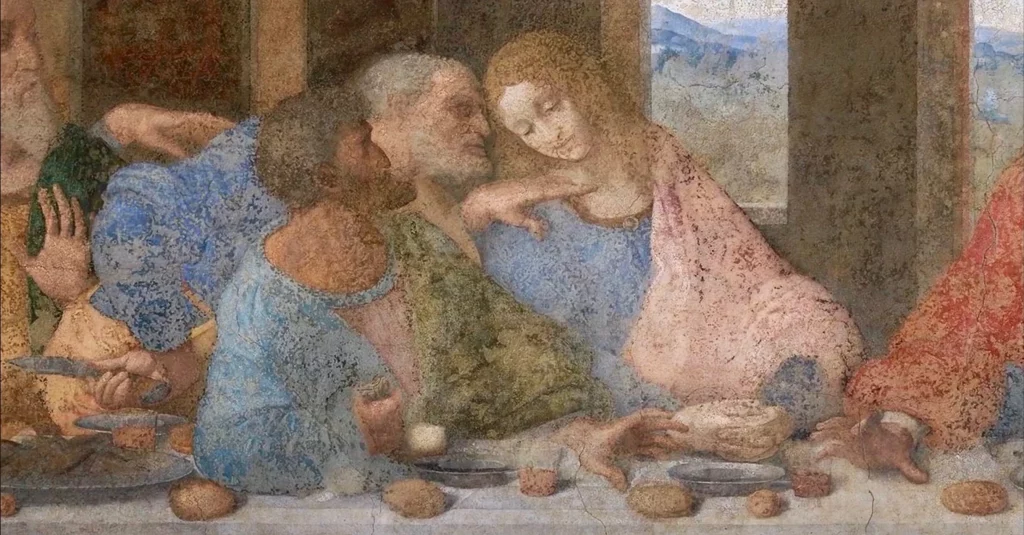
Leonardo painted in an experimental secco fresco (dry) instead of buon fresco (true). In 1556, art historian Giorgio Vasari described it as just a “muddle of blots.” In 1999, The Last Supper was restored over the course of 21 years.
READ: All The Last Supper Paintings in Renaissance Italy
You’ve got to be organized and reserve in advance to see this Leonardo masterpiece. It’s kept in a special microclimate with restricted access. Advance reservations are mandatory.
I’ve written a complete guide to everything you need to know about seeing The Last Supper — what to expect, how to get tickets, and an analysis of the painting itself. Click here for a ticket and guided tour of The Last Supper. You can also buy a combined ticket for The Last Supper and the Duomo.
- Address: Piazza Santa Maria delle Grazie 2
- Hours: Tues to Sun 8:15 am to 7:00 pm
- Entry fee: 15 €, plus a 2 € advance booking fee
3. Leonardo’s Vineyard | La Vigna di Leonardo
From a family of wine makers himself, Leonardo owned his own vineyard in Milan. The Sforza family gifted the vineyard to the master painter as thanks for creating The Last Supper, almost 500 years ago. Leonardo used to take breaks from painting and retire to this calm sanctuary.
The vineyard was damaged in WWII. But the vineyard’s present day owners stepped in. Based on DNA testing of roots, they re-propagated and re-planted vines to produce the very Leonardo grape would have sipped. It’s called malvasia di candia aromatica, a white grape popular in the Renaissance.
A trip to sip an aperitivo in the genius’ vineyard is one of the most unusual things to do in Milan. If you want to visit this Milan hidden gem, however, you need to book in advance.
>>> Click here to purchase your Vigna di Leonardo ticket
- Address: Corso Magenta 65
- Hours: 9:00 am to 6:00 pm
- Entry fee: € 12, included in the Milan City Pass.
- Pro tip: You can also stay at the restored 16th century villa on the grounds, Casa Degli Atellani
4. Leonardo’s Horse | Il Cavallo dello Sforza
500 years in the making, Leonardo’s Horse is a massive monument built from Leonardo’s designs and sketches. It all began in 1482.
That year, the Duke of Milan challenged Leonardo to build the world’s largest equestrian statue, perhaps seeking to outdo the Marcus Aurelius statue outside the Capitoline Museums in Rome. Leonardo replied, “I will make the greatest statue in Italy to honor your deceased father. Just wait and see.”
By 1482, Leonardo was already famous. He was accomplished at both art and engineering, but not accomplished at actually completing a commission.
Ten years on, the notorious procrastinator had only produced a 24 foot clay model and a methodology for creating the final bronze product in one piece. To be fair, Leonardo was working simultaneously on The Last Supper.
Unfortunately, the 80 tons of bronze earmarked for Leonardo’s equestrian statue were coopted. The bronze was used for weapons when French troops invaded Milan. Leonardo’s model was likely destroyed by the invading French.
Leonardo’s Florentine rival, Michelangelo, would later mock Leonardo for failing to bring the project to fruition. According to Leonardo’s notebooks, Michelangelo taunted: “Explain it yourself, horse-modeler that you are, who, unable to cast a statue in bronze, were forced to give up the attempt in shame.”
But wait, there’s a happy ending to this particular Leonardo story! In 1965, Leonardo’s notebooks were discovered in the National Library of Madrid. The notebooks included his sketches for the bronze horse. In 1977, US citizen and art connoisseur Charles Dent became enamored with the romantic legend.
He hired the sculptor Nina Akamu to bring Leonardo’s horse to life. It was installed in Milan in 1999, outside the racetrack. It isn’t precisely the same as Leonardo’s scratchpad drawings. But the artists intended to honor Leonardo’s vision.
Address: San Siro Hippodrome Cultural Park, Piazza dello Sport 6
5. Pinacoteca Ambrosiana | Leonardo Codex & Disputed Leonardos
The Pinacoteca Ambrosiana is a hidden gem in Milan, a beautiful place to lose yourself in classic Renaissance art. It’s a nifty combination of great art, no crowds, and rare Leonardo paintings and journals. Founded in 1618, the museum has the largest cache of Leonardo works in Milan. It’s a must visit destination in Milan for art lovers.
Housed in a beautiful library, the museum’s main claim to fame is Leonardo’s Codex Atlanticus in the the three tiered reading room, the Bibliotheca Ambrosiana. The bibliotheca is one of the most important libraries in Italy. The Atlanticus Codex is comprised of Leonardo’s musings and doodles, evidencing his superhuman mind.
It’s a 12 volume bound set of drawings and writings, created between 1478-1519. They were donated to the library by Marquis Galeazzo Arconati in 1637.
Unlike other places housing Leonardo drawings, like the Galleria Accademia in Venice, the Ambrosiana Library has a rotating selection of drawings on display for all to see.
>>> Click here for a ticket to the Ambrosiana Library
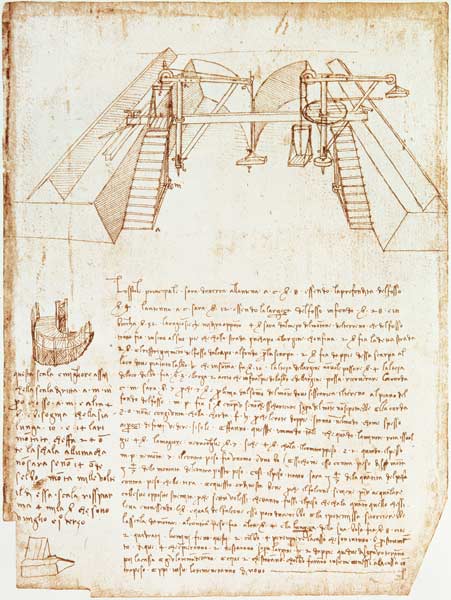
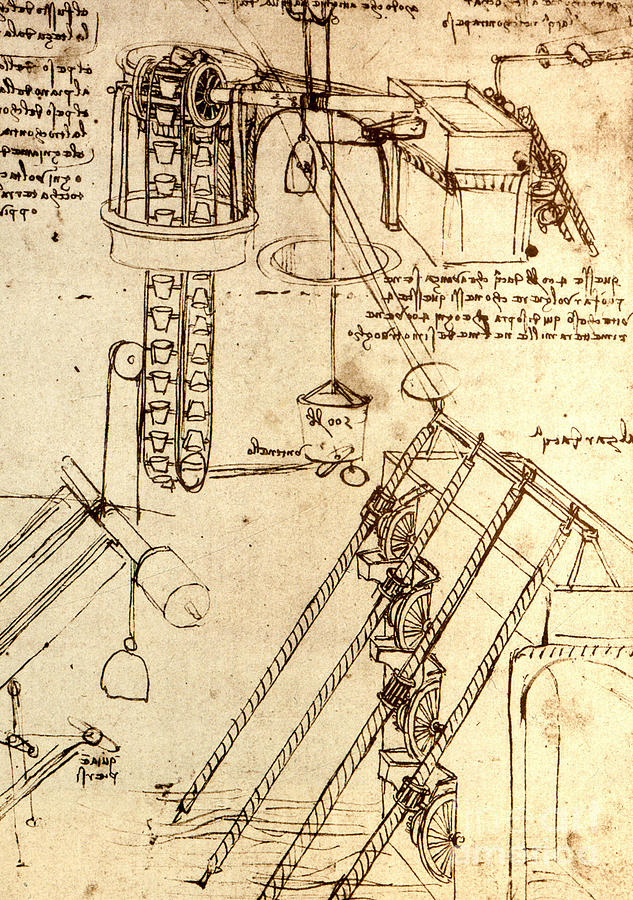
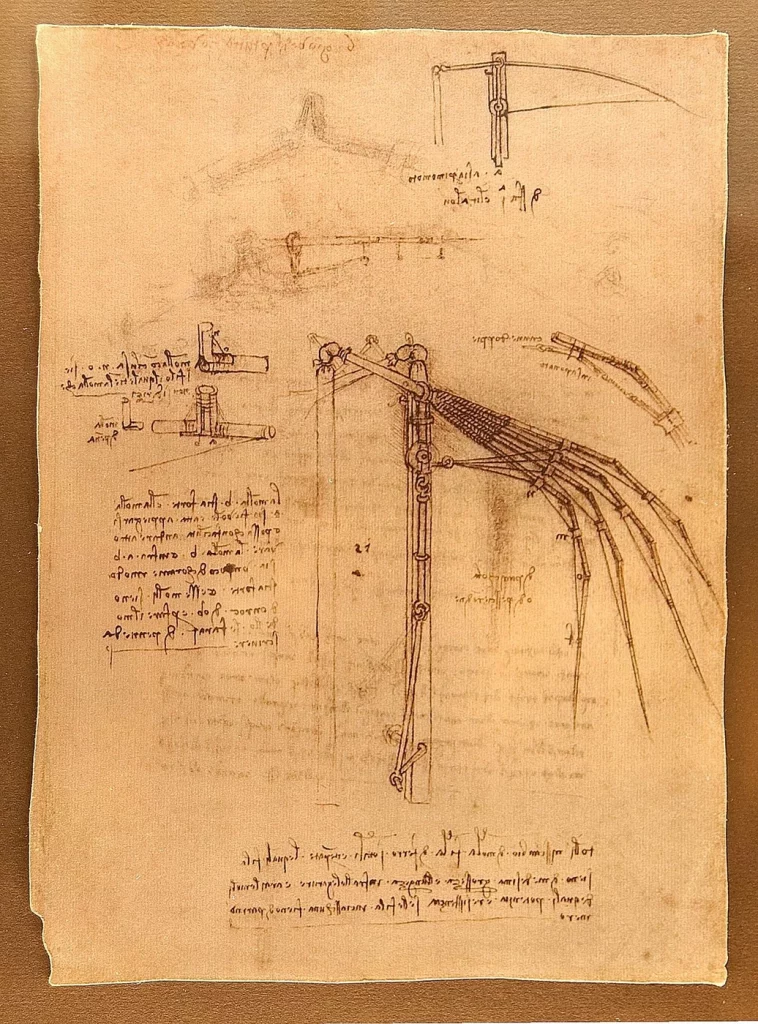
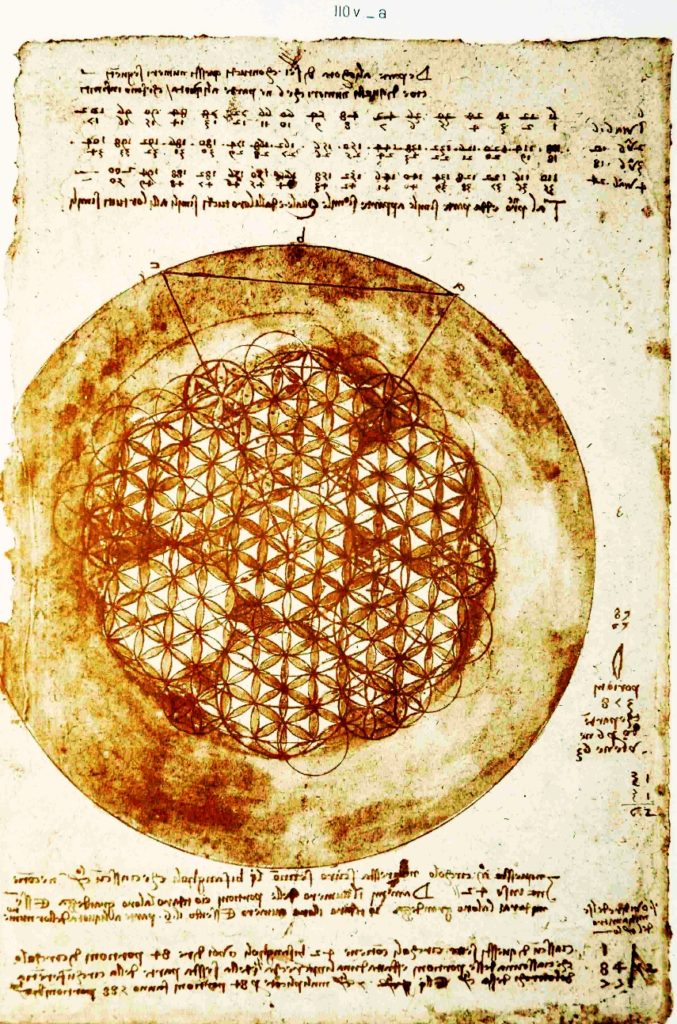
The codex covers many topics and reflects Leonardo’s status as a gifted polymath. It contains images relating to hydraulics, architecture, military devices, human and animal anatomy, the study of flight, and some drawings of “grotesque” figures. (Grotesque frescos were popularized during the Renaissance, after the discovery of Nero’s Golden House in Rome.).
The codex even suggests that Leonardo was a vegetarian, referencing his disgust at eating animals.
The Pinacoteca Ambrosiana also houses two rare disputed Leonardos in its 24 galleries, which have not been fully authenticated. The first disputed painting is the Portrait of Isabella d’Este, the wife of the Duke of Milan.
There’s no doubt that Leonardo created a charcoal sketch of d’Este, which is authenticated and hangs in the Louvre. We know from letters that Isabella repeatedly asked Leonardo to make an official portrait from the sketch.
But did he ever complete one? If he did, is it another “Lost Leonardo”?
In 2013, a richly colored canvas portrait obviously based on the sketch was discovered in a private bank vault in Switzerland. Possibly an oil version of Leonardo’s sketch, the painting has been carbon dated and vouched for by various Leonardo experts. But with no historical documentation, its provenance is still in doubt and it’s not universally accepted as a Leonardo.
The second disputed Leonardo is the Portrait of a Musician. It’s an unfinished painting originally billed as a “school of Luini” paintings. In 1798, the museum changed the attribution to Leonardo. Controversy surrounds the painting. It would be Leonardo’s only known portrait of a man.
Many factors weigh against the off key painting’s authenticity: it’s mostly unfinished with some overpainting, lacks any historical documentation, there’s no record of anyone commissioning the painting, the subject is unidentified, and everything below the face is stiff and clumsily rendered.
Other scholars claim the face and hands were painted by Leonardo. Some even speculate that this was a Leonardo self portrait, as Leonardo loved music.
The sheet of music in the subject’s hand (uncovered during restoration) contains a cryptic inscription, which is a classic da Vinci hidden message. The paintings is increasingly accepted as a Leonardo, at least in part.
There are also two paintings by Leonardo’s lover and pupil Salai. Though technically a pupil, Salai wasn’t a terribly good painter and Leonardo kept him around for matters of the heart and as a handy model. Salai may have been the model for Mona Lisa and several other Leonardo masterpieces.
But Salai did produce several well-documented paintings. Among them at the Ambrosiana is a handsome self portrait, made with full knowledge of Leonardo’s sfumato technique. Experts believe the painting was retouched by Leonardo himself. There’s also a Salai copy of Leonardo’s authenticated St. John the Baptist.
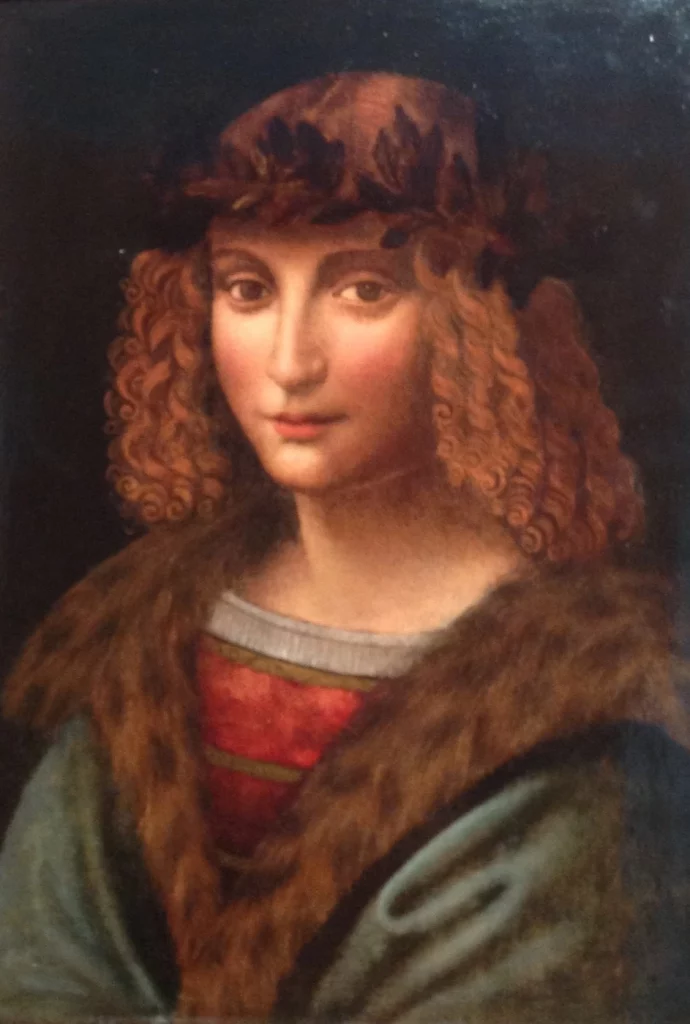
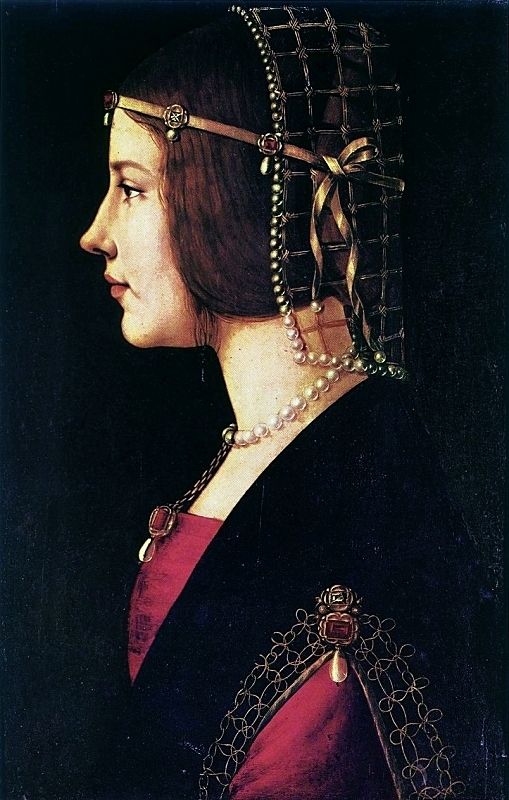
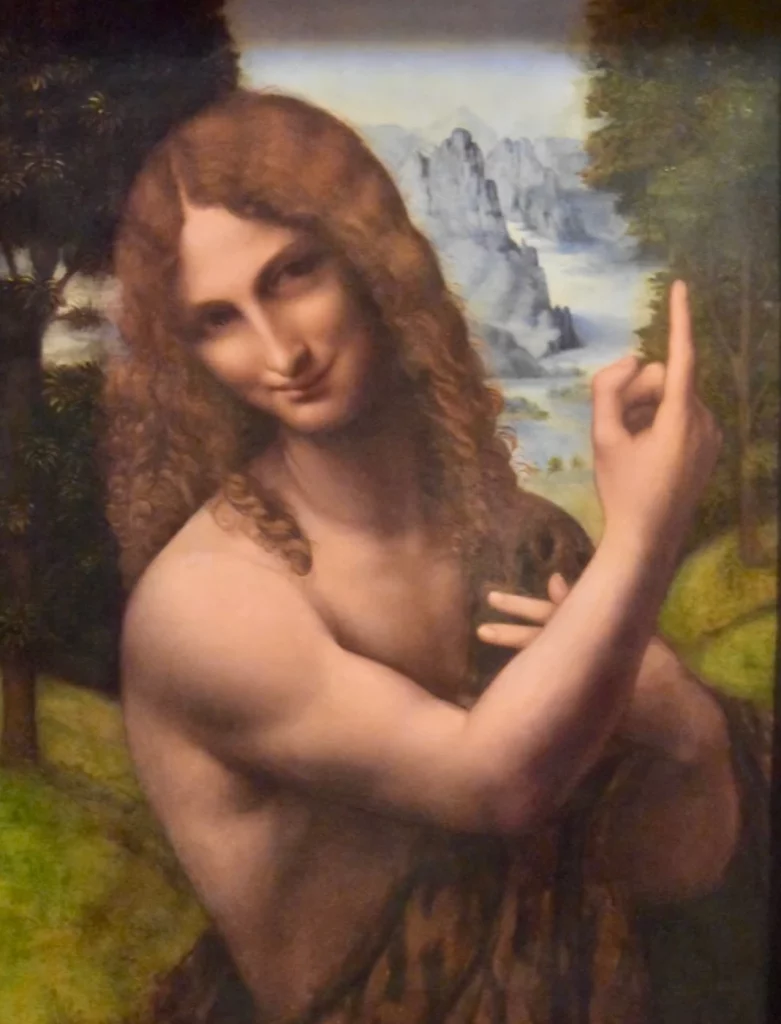
If you need another Leonardo knock off or pastiche, you’ll also find the Lady with a Pearl Hairnet. This portrait was attributed to Leonardo initially. Later, it was re-attributed to Giovanni Ambrogio de Predis, an artist who worked in the Sforza court with Leonardo as a portrait painter.
The painting isn’t nearly as well executed as Leonardo’s authenticated masterpieces. And it’s a conventional side profile rather than Leonardo’s trademark 3/4 profile.
But the details are luminous and it’s possible that Leonardo painted portions of the work, as was typical for artists’ studios of the day.
>>> Click here for a ticket to the Picacoteca Ambrosiana
- Address: Piazza Pio 2
- Hours: Tuesday through Sunday 10:00 am to 6:00 pm
6. Leonardo da Vinci National Science and Technology Museum
Opened in 1953, this is a sprawling museum for history and science enthusiasts. Its collection is housed in the former Benedictine monastery of San Vittore Olivetan.
But it has some modern additions and outdoor spaces. As a result, the floor plans a bit confusing and you’ll need to pick up a map when you buy your ticket.
Inside, you’ll find a showcase of drawings and models of Leonardo’s inventions, anatomical drawings, and a mishmash of various mechanical and scientific wizardry. You can see Leonardo’s interest in cars, ships, aircraft, etc. At an extra cost of 8 euros, you can even visit a mini submarine.
>>> Click here to book a skip the line ticket
- Address: Via San Vittore 21
- Hours: Tues through Fri 9:30 am to 5:00 pm & Sat and Sun 9:30 am to 6:30 pm
- Entry fee: € 10
7. Sforza Castle | Castello Sforzesco
Sforza Castle is one of Milan’s most stately structures, one of the top attractions in Milan. It’s a splendid example of Renaissance architecture, the product of the mercenary-turned-politician Francesco Sforza. It was the former seat of the Dukes of Milan. Leonardo worked and lived in the castle during his tenure in Milan.
Today, the castle houses various museums. In the Sala delle Asse, you’ll find an important Leonardo fresco. Commissioned by Ludovico Sforza, it’s the only Leonardo fresco in existence besides The Last Supper. The fresco graced the Sforza’s illustrious ceremonial room.
It’s an unusual decorative ensemble, with a dense mass of vegetation. It depicts a garden pergola with 16 mulberry trees bound together by a golden rope. Mulberry trees were associated with wisdom and prudence. In the center is the Sforza and d’Este coats of arms.
Painted in seco fresco like The Last Supper, Leonardo’s fresco in a state of disrepair and conservation is ongoing. Historians initially dismissed the fresco as a fantastical caprice. But Leonardo was intensely interested in nature and produced many botanical studies.
For many centuries, the fresco was hidden under a thick layer of whitewash. It was only discovered in 1893-94. After restoration, the hall was reopened to public. But the restorers misinterpreted Leonardo’s initial design, adding excessive details.
In 1954, a second restoration took place and all the non-Leonardo additions were removed. Another still ongoing restoration began in 2013. There’s a 10 minute video about the fresco’s creation and life in the hall.
The Sforza Castle houses another important Leonardo work, the Trivulziana Codex. The codex contains Leonardo’s studies on military and religious architecture, including some sketches of the Duomo. It’s housed in the Trivulziana Library, where you can examine ancient documents dating from the 8th to the 18th century.
Leonardo’s codex is generally not on public display. But, via a digital reproduction, visitors can leaf through the codex, page by page, magnifying the original drawing up to 20 times.
>>> Click here to book a skip the line ticket to the Castle Sforza
- Address: Piazza Castello
- Hours: Castle courtyards open daily from 7:00 am to 7:30 pm. The museum is open Tuesday 2:00 pm to 5:30 pm & Wed to Sun 4:30 pm to 5:30 pm.
- Entry fee: The Castle courtyards are free. Entry to the museums is € 5.
8. Canals of the Navigli
The Navigli is Milan’s picturesque canal area full of life, history, and character. It’s where locals go to escape the bustle of the city. Milan’s sophisticated canal system dates from the late 13th century, when canals were installed to carry marble to the Duomo for construction (as well as other goods). The system transformed Milan into a “city of water.”
Leonardo found fertile ground for his imagination in the Navigli. Many of the canals were designed in part by Leonardo. But his greatest invention was the canal miter lock, an invention still in use in many places today. Leonardo’s drawings for this project are part of the Codex Atlanticus in the Ambrosiana Museum.
The Navigli area is THE place to be at night. The area is crammed with bars, cafes, restaurants, clubs, and vintage clothing stores. You can also take a canal or gondola cruise. The first Sunday of every month, there’s a large vintage market with high end antiques — the Navigli Grand Antique Market.
>>> Click here for a boat tour of the Navigli
- Address: Naviglio Grande
- Getting there: Take metro line 2 to Porta Genova
9. Church of San Maurizio | Chiesa di San Maurizio al Monastero Maggiore
The 8th century Church of San Maurizio may be Milan’s most beautiful church. It’s certainly one of the best preserved. The sober exterior hides a colored frescoed interior.
The frescos were created by Leonardo’s workshop in Milan in the 15th century. They’re nicknamed the “Sistine Chapel of Milan.”
The airy galleries of the church’s adjacent monastery house Milan’s expertly curated Archaeology Museum. Exhibits tell the story of Milan.
The collection is varied, with Etruscan, Greek, and Milanese artifacts. You can also see remnants of Milan’s ancient city walls. A highlight is a 1st century BC mosaic pavement excavated nearby in 1913.
- Address: Corso Magenta 15
- Hours: Tues to Mon 9:00 am to 12:00 pm & 2:00 pm to 5:00 pm
- Entry fee: € 5
10. Milan Cathedral
Leonardo was involved in the re-design of the Duomo, along with other famed architects including Donato Bramante. The architects were charged with construction of the dome lantern.
Leonardo made sketches, which can be found in the Ambrosiana’s Codex Atlanticus. They weren’t used, however, the commission going to two court architects instead.
>>> Click here to book a ticket to the cathedral and its rooftops
If you like to travel with a theme, here are some of my other artsy Italy guides:
- Guide To the Best Art in Italy
- Caravaggio Guide to Rome
- Bernini Guide to Rome
- Italian Baroque Artist Artemisa Gentileschi
- All of Leonardo da Vinci’s Works
- Michelangelo Guide to Florence
- Art Lover’s Guide to Tuscany
- Best Museums in Rome
- Secret Palace Museums in Rome
- Best Museums in Florence
- If you’d like to follow the Leonardo da Vinci trail in Milan, pin it for later.

